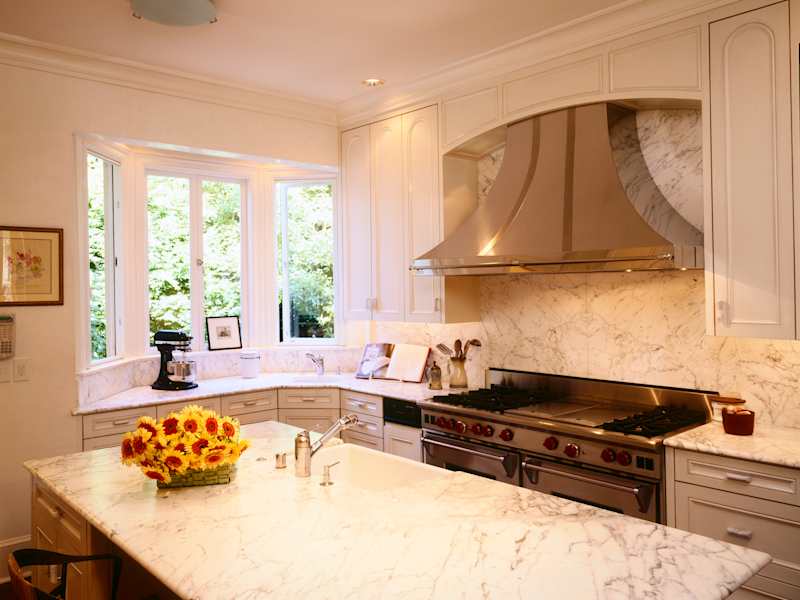We Asked 3 Designers the “Outdated” Kitchen Feature They Never Want to See Again, and They Basically All Agreed

This article may contain affiliate links that Microsoft and/or the publisher may receive a commission from if you buy a product or service through those links.
When you move into an older home, you can expect to find totally outdated kitchen features and appliances, especially if it’s never been updated. Oftentimes, a vintage kitchen can truly be a delight, and make a space feel more special compared with more modern-day ones. As Bambi A’Lynn Bratton, owner and interior designer at her namesake design firm, says, a vintage kitchen is a “good thing — sometimes great — in an old-world cottage dated earlier than the 1920s when you want to keep true to the original aesthetic.” But sometimes it’s not ideal — vintage kitchens aren’t always cute, stylish, or even remotely functional for our current time period.
“The kitchen truly is the heart of the home — it should reflect livability, function, and harmony,” Katelyn De Spain, principal designer and owner of Makehouse Design Studio, points out. “Adding modern upgrades to your kitchen such as new appliances, natural stone countertops, and fine-tuning the layout can all add real value to your home, as well as quality of life.”
While there are several design features from the 1960s and ’70s that have outstayed their welcome, even ones from as recently as the 1990s or 2000s can be considered outdated, too. To find out which kitchen components are past their prime, and shouldn’t circle their way back into the what’s trending conversation, I spoke to three designers to get their takes.

1. Tiled Countertops
Tiled countertops are undoubtedly a way to bring more personality and pattern into a kitchen, as design-savvy homeowners discovered in the 1970s. As De Spain puts it, tiled countertops were initially hailed as the most durable surface in the kitchen, and were loved for all the various designs that could be achieved.
But then, people discovered that they weren’t all that functional. “Once lived in, however, it was quickly realized how difficult it was to maintain clean-looking grout in the long term,” De Spain says. “Today, we opt for a natural stone such as quartzite or marble countertops to bring in both durability and functionality.”

2. Linoleum Floors
Even though it’s been around as far back as the 19th century, linoleum rose to stardom in the mid-century era, but nowadays it can look fairly archaic when compared with the flooring materials of today. If you’ve moved into a home that has a linoleum-clad kitchen, Ayten Nadeau, founder and principal designer of i-TEN DESIGNS, says that you can give your kitchen a “fresh twist” with materials that are both “fab and functional.”
“For flooring, how about a natural touch with cork or bamboo?” she suggests. “These eco-friendly beauties not only add a chic, warm vibe but are super easy to update, keeping your kitchen looking hot for years.” Find more designer-approved kitchen flooring ideas here.

3. Granite Countertops
While granite became the countertop material du jour of the 2000s (and, undoubtedly, is still often used today), it can come off as a bit dated in modern kitchens. In fact, Bratton succinctly suggests you “get rid of granite.” Instead, she recommends replacing this bygone material with marble, quartzite, or quartz for a more current look.

4 “Hearth-Style” Vent Hoods
You’ve likely spotted those “hearth-style” vent hoods in nearly every 1990s or 2000s kitchen. They were extremely popular, but now, Bratton says they’re “clunky,” but that doesn’t mean homeowners aren’t still opting for statement range hoods. As a swap, she advises opting for a more streamlined hood design.

5. Built-In Can Openers
Now that electric can openers are the norm, you may find it surprising that back in the day, homeowners loved having built-in can openers (or even flour sifters!) located inside cabinets. De Spain says these handy tools used to be a central component of 1950s and ’60s kitchens, but as cooking utensil design changed, so did the need to have these awkward items as permanent fixtures in cabinets. Instead, put that electric or handheld can opener on your countertop, or tuck it away.

6. Cheap Appliances
Not all retro kitchen appliances are cheap. In fact, some say that the refrigerators from the 1970s last a lot longer than ones made today. But if the previous homeowners decided to install budget-friendly appliances several decades ago, or the appliances are so old that they just won’t serve your needs, it’s time to replace them. As Bratton says, you should consider substituting “cheap” appliances with long-lasting ones, especially from KitchenAid “when the budget is tight.”
Are there any other “outdated” kitchen features you hope never make a comeback? Let us know in the comments below!
Further Reading
We Asked 3 Chefs to Name the Best Ice Cream, and They All Said the Same Thing
The “Beautiful” $3 Flower Tumblers at Walmart People Are Buying 2 at a Time
Reese’s Just Launched a Limited-Edition Peanut Butter Cup, and It Tastes 4x Better than the Original
